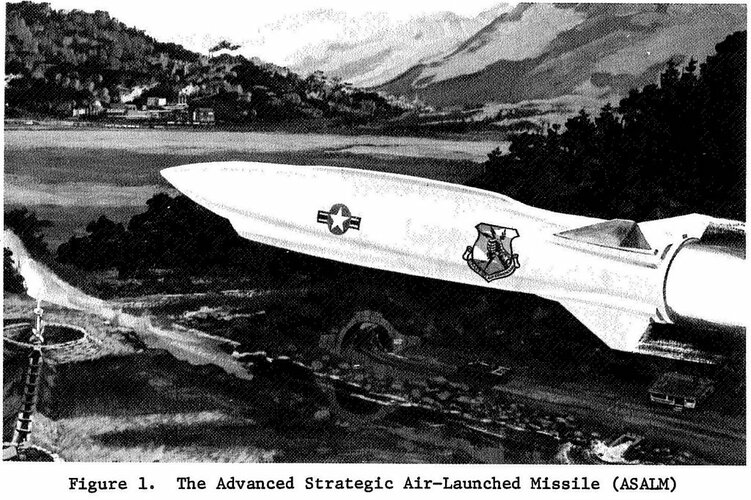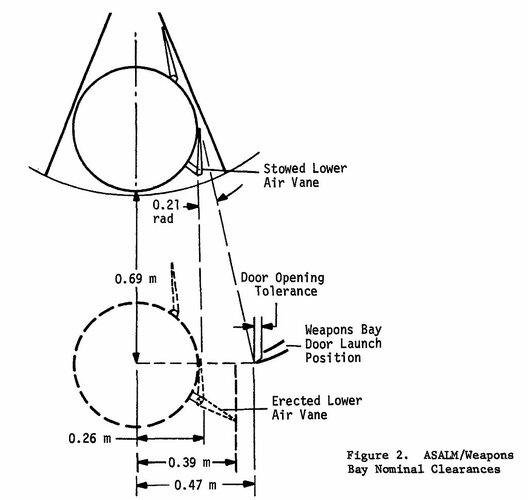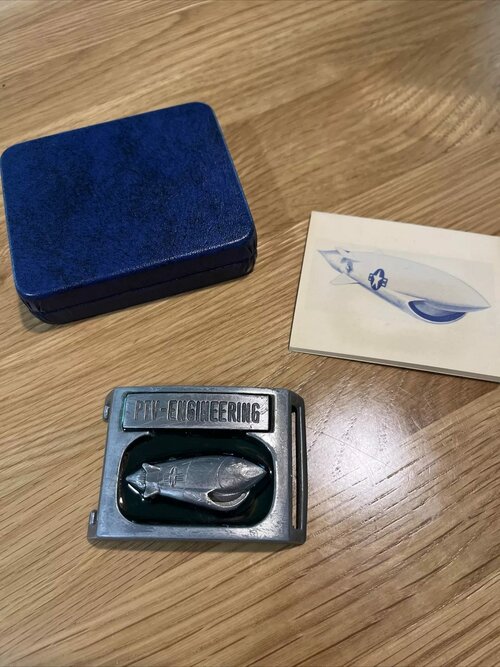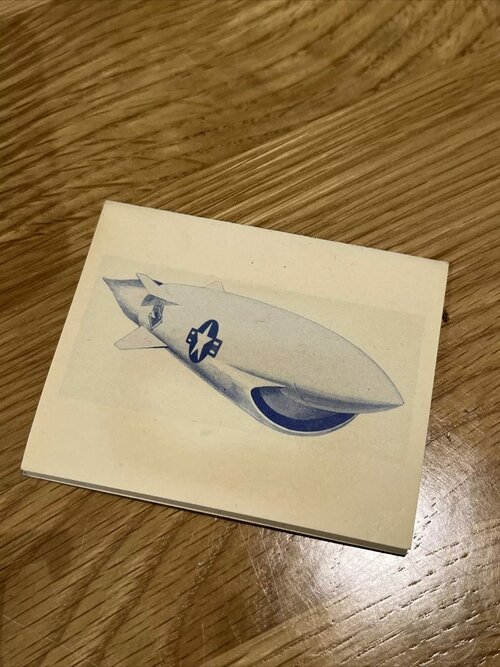Forest Green
ACCESS: Above Top Secret
- Joined
- 11 June 2019
- Messages
- 9,458
- Reaction score
- 17,264
I'm thinking that Mach 3 at ground level may actually be more useful than Mach 8-10 at 20+km.
It would have been LRASM-B, but the program was dropped in favor of putting all effort on LRASM-A aka JASSM-based AShM .....With all of the renewed focus in the past five years or so on high supersonic and low hypersonic weapons I wonder if someone will dust off the ASALM programme and then restart it but taking into account all the advances in the relevant areas of aerodynamic research, material sciences, manufacturing technology, avionics and programming?
If you look at systems capable of sea-skim (Russian AShM), max Mach is around 2.5+ at sea level .... this probably marks the material (aluminium alloy, steel) limits to aerodynamic heating ....I'm thinking that Mach 3 at ground level may actually be more useful than Mach 8-10 at 20+km.
Of course you can argue the use of composites, but that would probably make it expensive to be considered for one-shot devices ...
What's the limit of the same material at 20km altitude? Can it do Mach 10? Probably not. So it's likely to be composites either way.If you look at systems capable of sea-skim (Russian AShM), max Mach is around 2.5+ at sea level .... this probably marks the material (aluminium alloy, steel) limits to aerodynamic heating ....
Of course you can argue the use of composites, but that would probably make it expensive to be considered for one-shot devices .....
What's the limit of the same material at 20km altitude? Can it do Mach 10? Probably not. So it's likely to be composites either way.
Hey I have that book!ASALM chapter from Nuclear Weapons Databook, Volume I
SLAM was intended to fly at Mach 3+ on the deck. It had gold-plated inconel skin.If you look at systems capable of sea-skim (Russian AShM), max Mach is around 2.5+ at sea level .... this probably marks the material (aluminium alloy, steel) limits to aerodynamic heating ....
Of course you can argue the use of composites, but that would probably make it expensive to be considered for one-shot devices .....
And was designed in a price-no-object time period as an unmanned bomber more than a missile. (multiple warheads, all being dropped in different locations)SLAM was intended to fly at Mach 3+ on the deck. It had gold-plated inconel skin.
I believe I have the original artwork for this. Do you know anymore about it?enjoy





See post #1Would the ASALM have fit into a VLS as found on the Ticonderoga/Arleigh Burke or into an Armoured Box Launcher? It seems to be a strong contender for the supersonic low altitude AShCM niche.
And test articles flew well above Mach 5. With a ramjet.Looking at this concept, it seems that this was the ideal Triservice medium range cruise missile. Compatible with rotary launchers, VLS, ABLs, high cruise speed and thus low reaction time, and if fitted with a conventional warhead, its impact speed probably would be able to compensate for the lack of boom. PLUS the fact that it could be used as an LACM, AShCM, AAM and SAM with very little changes.
Would that not cause structural issues though?And test articles flew well above Mach 5. With a ramjet.
Although with the AIM-115i am not sure what would be able to carry it fully fueled on a single pylon.Would that not cause structural issues though?
In any case, i wonder what the Triservice designation would have been. I’m going to guess and say AGM-115, with the speculative variants being BGM/RGM/AIM/RIM-115.
This neat “little” missile could also be a great Foxbat/Foxhound chaser- 300 nm range, an average speed of Mach 4.5 = very easy Foxhound kill.
Why?Would that not cause structural issues though?
It wasn't designed to. The missile just kept accelerating. You posted the story in this thread back in 2015. It was designed to fly at Mach 4, but a fuel control problem sent it to Mach 6. Too much speed might cause structural failure due to excessive heating and/or pressure, and too much fuel burn might reduce range.Why?
..at low level!And test articles flew well above Mach 5. With a ramjet.
The final telemetry from the vehicle just before we lost it, translated as "I am at Mach 6 and still accelerating as my skin begins to melt. I just ran out of fuel. Goodbye."
That was literally how the Tesr articles were fired.Although with the AIM-115i am not sure what would be able to carry it fully fueled on a single pylon.
Not this?
The final telemetry from the vehicle just before we lost it, translated as "I am at Mach 6 and still accelerating as my skin begins to melt. Owww! It burns... it burns...."

ABOVE: Congratulations after another successful and last ASALM-PTV flight. Martin Marietta built 7 test missiles and flew all 7 successfully. From left to right: Frank Webster from Systems Dept., “Charlie” French from Aerodynamics, Jim Bucy from Propulsion, and Marty Koshar who was Project Manager.

ABOVE: SLAT: Supersonic Low Altitude Target. Pictured here are (left to right) Charlie French (Areodynamics), Mendel Mullinax (Model Mechanic) and Lawrence Gilbert (Aerodynamics.)
It perturbs how neither the ASALM nor the SLAT entered production, the ASALM would no doubt had the Soviets shitting bricks if it had entered service.
By the time this was in testing, Navy had no interest in liquid fuel missiles on ships.Looking at this concept, it seems that this was the ideal Triservice medium range cruise missile. Compatible with rotary launchers, VLS, ABLs, high cruise speed and thus low reaction time, and if fitted with a conventional warhead, its impact speed probably would be able to compensate for the lack of boom. PLUS the fact that it could be used as an LACM, AShCM, AAM and SAM with very little changes.
Navy had no interest in liquid fuel missiles on ships.
Wonder why they picked it for LRASM-B? (And then cancelled it almost before the ink was dry.)Well, if SLAT had actually worked, I'm pretty sure it would have gone to production. But it went 1-for-7 in flight testing, which is a very bad sign. Makes me suspect that ASALM probably wasn't as much of a sure thing as everyone seems to think.
Harpoon, Tomahawk. . .By the time this was in testing, Navy had no interest in liquid fuel missiles on ships.
Wonder why they picked it for LRASM-B? (And then cancelled it almost before the ink was dry.)
Really? Then explain the presence of R/UGM-84 Harpoons and R/UGM-109 Tomahawk cruise-missiles on USN warships? Both use jet-fuel not solid-propellant.
Well, if SLAT had actually worked, I'm pretty sure it would have gone to production. But it went 1-for-7 in flight testing, which is a very bad sign. Makes me suspect that ASALM probably wasn't as much of a sure thing as everyone seems to think.
ASALM used a much trickier high-density fuel called Shelldyne-H. It was hard to ignite when cold, and apparently tended to congeal on the sides of the fuel tanks rather than flowing into the engine.
I assume later in the flight it helps. But you need the same fuel to get to this momentWouldn't friction heating of the skin make the fuel more liquid and easier to pump into the combustion chamber?
But you need the same fuel to get to this moment
No, the Navy has no interest in exotic/dangerous liquid fuels like hydrazine on ships.By the time this was in testing, Navy had no interest in liquid fuel missiles on ships.
